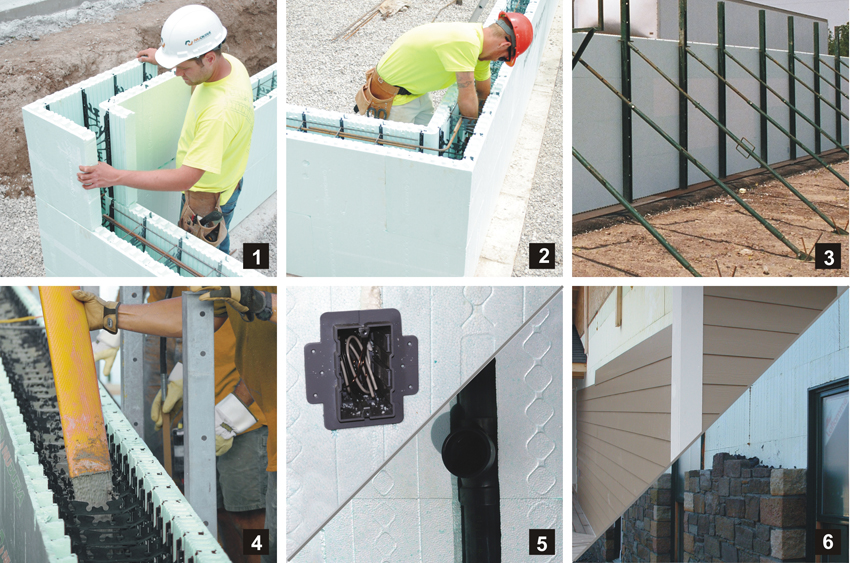Making the Business Case for Building with Insulated Concrete Forms: Energy, Safety, and Savings
ICFs in Combination with Other Floor and Roof Systems
There are many options for floor systems that integrate well with ICF wall systems. ICF walls are simply concrete bearing walls, so any floor system that is used for other types of bearing-wall construction can be used in combination with ICF wall systems. These include traditionally formed reinforced concrete slabs, ICF slabs, precast hollow-core plank, concrete on metal deck combined with steel joists, or cold-formed joists. Wood framing systems for floor construction can also be adapted for connection to ICF walls using embedded ledger bolts.
When to Use ICFs
ICF walls are best suited for bearing-wall-type construction. If the architectural style for the building is to be floor-to-ceiling glass with large cantilevered balconies, traditional concrete flat-plate construction is the best option. However, if the building is a typical apartment building, hotel, dormitory, or assisted living facility with a significant solid exterior wall that includes punched window openings, ICFs are the ideal solution. Generally, these types of buildings have a rectangular floor plate with the elevator located in the center. Longitudinal corridors service living units on either side. Each unit has a solid wall both on the exterior and at the corridor, making them ideal to function as structural bearing walls.
Furthermore, since multifamily construction requires fire barriers between dwelling units, ICF walls create a superb demising wall. Besides providing superior protection from spreading fire (2 to 4 hours), ICFs also have excellent noise-attenuation properties. Whether designing an apartment complex or hotel, both fire safety and noise reduction are always concerns. Energy efficiency is also a major concern for apartment owners and hotel operators. ICF concrete buildings benefit from the lower energy bills resulting from the high-performance envelope.
When to Consider ICFs
ICFs should be considered for any building that has a long-term owner, such as a build and hold developer or a government entity. Generally, because these forms and the wall system become so energy efficient, locations, where the latest energy codes have been adopted are well-suited to building with ICFs. They are also well-suited to any kind of a wall system that has many punched openings, as the energy codes are now forcing buildings to adopt such openings, especially in multifamily construction. Any place where resilience (to fire, wind, earthquakes, and/or flooding) is an issue is also ideal for building with ICFs.
In the past, short-term building owners or build and sell developers—who oftentimes are not concerned about long-term value and are more concerned about short-term costs—usually built with the cheapest form of construction: wood frame. However, with recent spikes in soft-wood lumber prices, ICF construction has become first-cost competitive. If the building is in a location where energy codes are outdated (which is becoming rare), constructing a highly energy-efficient building might become less compelling if the builder is intent on selling the building.
As mentioned previously, curtain walls are better suited to concrete-frame construction than ICFs. However, some structures with curtain walls have been built using ICFs, where ICFs more or less form a frame around the exterior and then spandrel glass is used in front of the ICFs.











